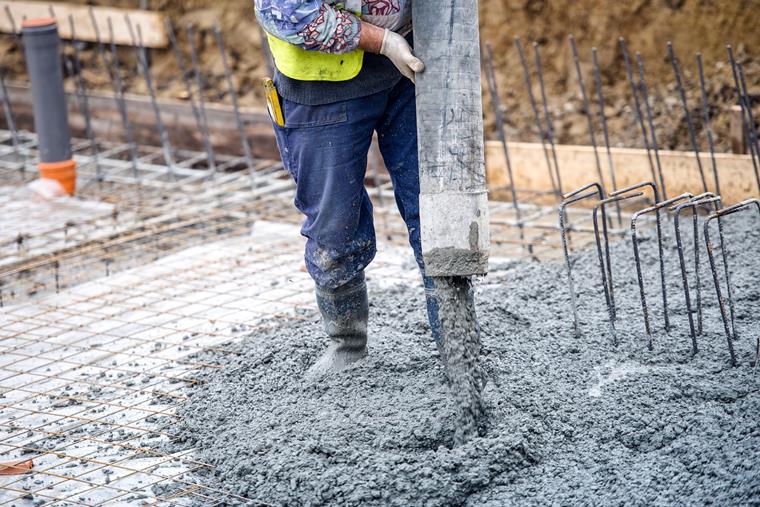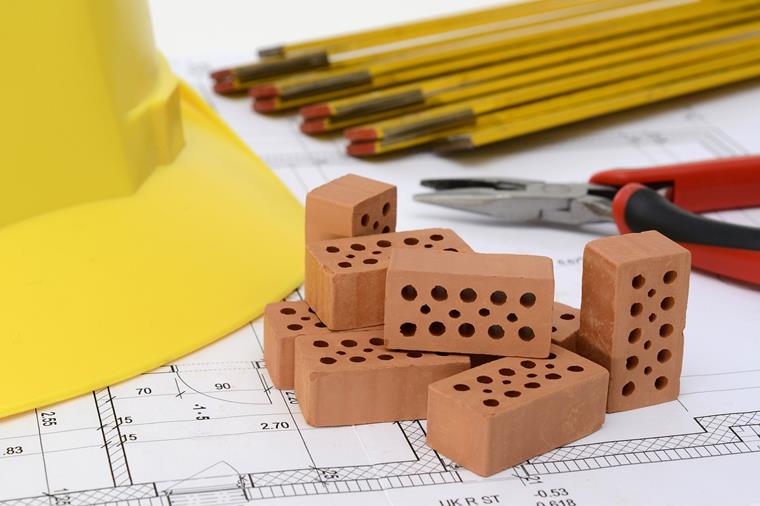Vacation at Construction Site
Thomas studied engineering at the Technical University of Munich, after working on a construction site during his vacations. He was employed for a few years, then decided to use his experience to build something of his own. He did not just want to do structural analysis, but also to plan something that would then be implemented on the construction site. New challenges were needed.
- "I wanted to be able to say: Yes, I worked there! That was my inner drive."
Many of us definitely know this creative drive. Today, Thomas is not only a structural engineer; he also runs his own engineering office, TuB Tragwerk GmbH. They offer a wide range of services: They take over planning services in the area of new buildings, reconstructions, renovations, and maintenance in the commercial industrial environment, as well as in residential construction.
What is structural engineering?
What is often used synonymously in practice is actually not exactly the same thing. We ask Thomas how he distinguishes the two terms. Structural and Civil Engineer: Is there any difference at all?
First of all, civil engineers are very versatile. There are not only the usual structural engineers, but also traffic engineers and those who work in hydraulic engineering or tunnel construction. Thomas has decided in favor of the path of the conventional structural engineer.
For him, the term "structural engineer" is not broad enough. It is not just about calculating loads in order to get a construction permit at the end. Therefore, he favors the term structural engineer. A structural engineer coordinates with all parties involved in the construction, thus does not act alone, but always interdependently with architects, fire protection experts, and building services, for example.
To this end, Thomas and his company always get involved in the planning process as early as possible, even before the architect has submitted his/her final drawing. This way, everyone can work together on the best solution for the building without having to change anything later.
- "The computational side is important, of course, but what we add value to as structural engineers is working with the other disciplines to develop the best solution for the client."
The main point is to advise clients. TuB Tragwerk GmbH works with checklists in advance to show the client all the possibilities that the building may have. This includes structural decisions that, for example, enable a later extension or an increase of a story, but also those of an economic nature. Is it worthwhile to keep this large area column-free, but at an increased cost?
When is structural design necessary?
We ask Thomas in which cases it would be advisable to consult a structural engineer. He explains to us that wherever a house is to be built or renovated, the consideration of structural design is not only reasonable, but necessary. After all, the later stability of the building is important.
It starts with a carport. Do I need a structural engineer for a carport? It is always necessary to take the local conditions into account. How much wind load can it withstand, how much snow? Is it suitable for my house in my residential area? What are the requirements of the carport dimensioning? In order to be able to assess this, the opinion of a structural engineer makes sense, of course.
Do I need a structural engineer for a fish tank? The situation is similar when setting up a fish tank. It is important here which ceiling system was used in the house and which loads are assumed in the existing structural analysis. For larger tanks, it is then advisable to seek advice from a structural engineer.
What are your tasks?
From time to time, Thomas himself still coordinates the structural design. A project manager, the external contact person, instructs his/her employees and coordinates their work. Furthermore, he/she is in constant contact with the client and other specialists involved in the planning.
He tells us that he is currently in a kind of intermediate position between a managing director and a structural engineer. However, if more employees are added in the future and everything goes in an orderly, routine manner, he will completely withdraw into the observer position of a managing director.
Challenges in Structural Design
So far, he has already had to overcome numerous challenges. He tells us about how he and his team were tasked with ensuring that the concrete column of a building's facade made way for a hall while the building was still in use. Here, he particularly felt the responsibility of a civil engineer. Only with meticulous accuracy in planning can such an order be implemented correctly and safely.
- "There are people sitting upstairs on that floor while we are down here sawing off the column, and there just cannot be any mistakes."
To ensure that the planning from Thomas' hands could also be implemented on the construction site, he had consultations in advance with all those involved. It was important to him to sensitize the workers there to the fact that they have to implement all the work steps correctly and meticulously. Quality assurance is an important prerequisite for ensuring that a project is successful.
Structural engineering is not a job you lock the door on in the office. Many structural engineers follow structural decisions into their dreams. Is the steel section really sufficient to absorb the loads? Have I designed this component correctly? Will the client be satisfied?
After all, the responsibility is very high. Thomas thinks it can be difficult, especially when you cannot evaluate the design results yourself. When saying this, he refers primarily to structural analysis software. It is a good tool, but should always be transparent and verifiable. Thus, everything will go as planned on the construction site.
He explains that you forget to select the Calculate Self-Weight check box only once, and a structural disaster is preprogrammed. You should always offset in structural design, at least with a rough calculation formula, in order to exclude such problems. Often, such errors do not originate in the programming, but in incorrect input.
- "If my gut feeling tells me that it doesn't fit here, I have to do the calculation again."
Future of Construction Industry
Thomas now has over 22 years of professional experience. A lot has happened since its beginning, especially in terms of digitization. Manual drawings became CAD drawings. For years, BIM has been gaining more and more acceptance. He thinks cooperation between those involved in construction is incredibly important. Ultimately, digitization will continue to advance.
Robotics will help to use 3D plans and reinforcement drawings to automate the reinforcement work step. Due to tablets on the construction site, 3D nodes can move live and be compared, which cannot be displayed on a printed plan.
Most importantly, you can save a lot of time due to digitization. When working with A1 or A0 plans for reinforcement reductions, it takes some time to find your way around and pass on information. This would be much easier and faster with a tablet.
- "You have all the plans with you and you're not on top of the roof: Oh, now I forgot the plans downstairs and have to go back down.”
If he could change anything about the construction industry, he would like to see a greater awareness among clients and architects of what structural engineering can do. This is the easiest way to create economical, sustainable, and efficient structures.
For statements like "we have always done it this way", Thomas can only shake his head. The expertise is often simply lacking. Therefore, he talks a lot to those involved and explains the individual context in detail. In the construction industry, it is very important to be open to new things in order to move forward.
He would like to recommend that future engineers also think outside the box. You can always take something from other departments for your own and learn from it in order to further develop yourself.
It would be helpful, for example, if engineers and architects worked together on projects at universities in order to better understand each other's way of working.
What is your favorite structure?
Thomas does not have a special favorite building. Back as a student, he was always fascinated by bridge construction. There is a bridge in Switzerland from the turn of the century that he admired very much.
A few years ago, he went to Rome and discovered the Pantheon, in particular. He is very impressed that the people at that time created such a structure with their limited means. Our current method of concrete construction was basically invented back then. It is remarkable how durable buildings can be.
We can only agree with him. Thank you for being with us, Thomas! Would you like to listen to the full episode? You can find it here:

![BLOG 000104 | You can find the podcast episode with the full interview here: [https://www.dlubal.com/de/bildung/infotainment/podcast/000031 #030 BIM Master Plan for 2022 feat. Bernd Schlenker]](/en/webimage/038483/3459924/group-g12a1d8576_1920.png?mw=760&hash=14390b1c8ec88e748b11d792c7f6c920eef80dd8)
.png?mw=760&hash=cf40755b5434aa2d84eb348b78dfafda24445185)


